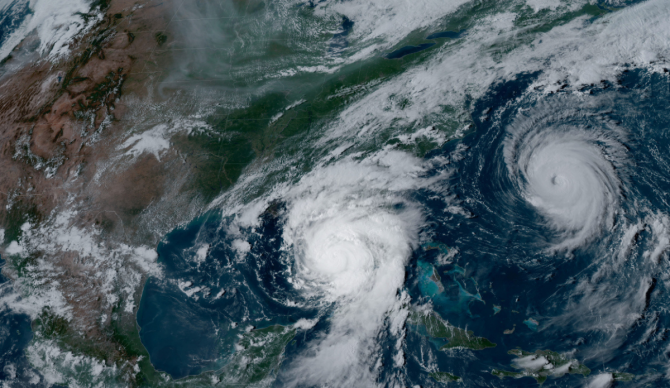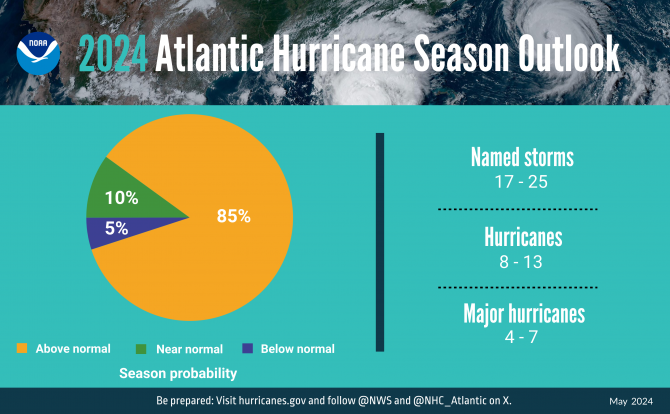
NOAA’s GOES-16 satellite captured Hurricane Idalia approaching the western coast of Florida while Hurricane Franklin churned in the Atlantic Ocean at 5:01 p.m. EDT on August 29, 2023. (Image credit: NOAA Satellites)
The National Oceanic and Atmospheric Administration has been warning us to expect an “above-normal” 2024 Atlantic hurricane season ever since it predicted the recent El Niño would be followed by another La Niña. Forecasters gave their first exact predictions for the upcoming season in an announcement Thursday, doubling down on their expectation that La Niña and warmer-than-average ocean temperatures will fuel an exceptional level of tropical activity.
“NOAA is forecasting a range of 17 to 25 total named storms (winds of 39 mph or higher),” they wrote. “Of those, 8 to 13 are forecast to become hurricanes (winds of 74 mph or higher), including 4 to 7 major hurricanes (category 3, 4 or 5; with winds of 111 mph or higher). Forecasters have a 70% confidence in these ranges.”
The Atlantic Hurricane Season begins June 1 and ends November 30, with an average of 7.2 hurricanes occurring each season between 1991 and 2020. Just last month they said we could see as many as 11 hurricanes in the upcoming stretch, so having a low-end prediction that is already higher than the 30-year average signals they truly expect a doozy. In fact, Thursday’s forecast marks the administration’s most aggressive hurricane season forecast on record.
Meanwhile, forecasters also say there is potential for an above-normal monsoon season in West Africa. That produces easterly waves that contribute to strong Atlantic storms.
“Light trade winds allow hurricanes to grow in strength without the disruption of strong wind shear, and also minimize ocean cooling,” they said. “Human-caused climate change is warming our ocean globally and in the Atlantic basin, and melting ice on land, leading to sea level rise, which increases the risk of storm surge. Sea level rise represents a clear human influence on the damage potential from a given hurricane.”


